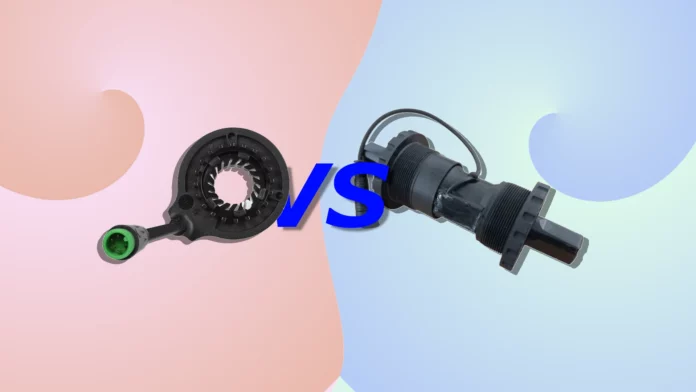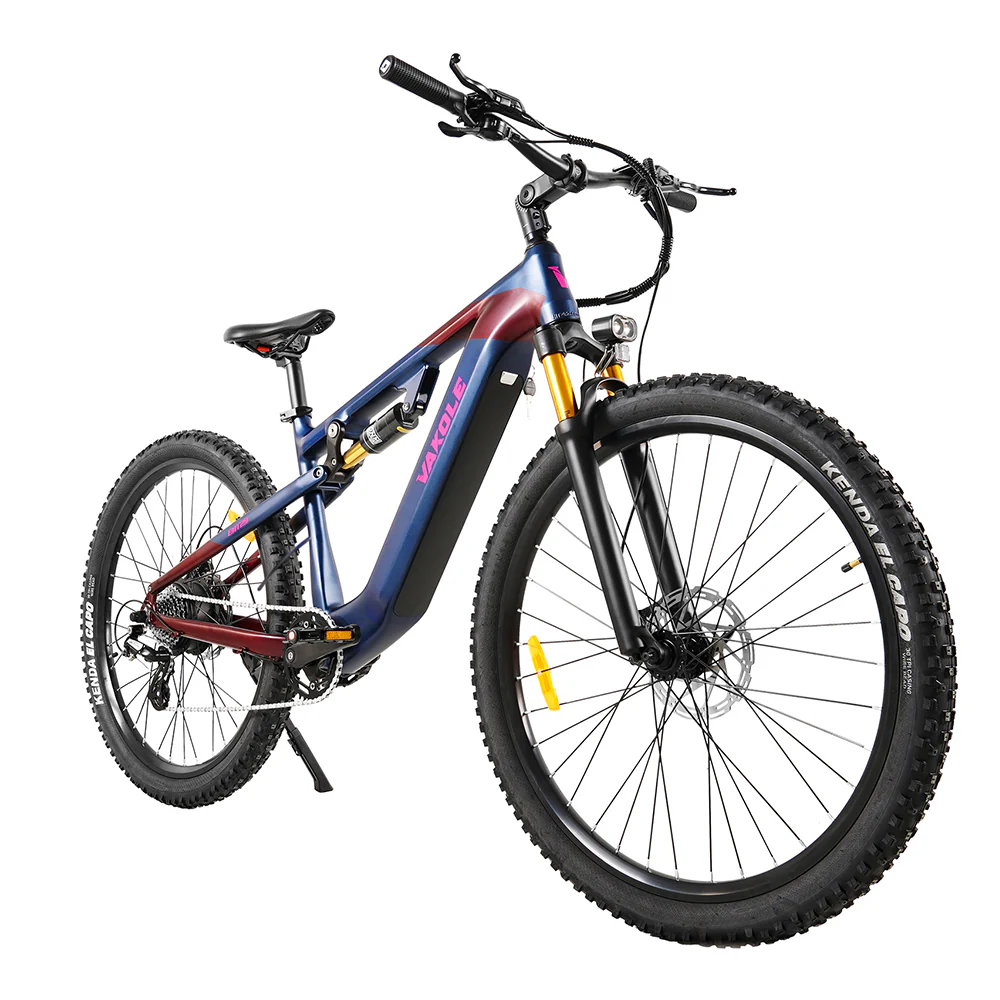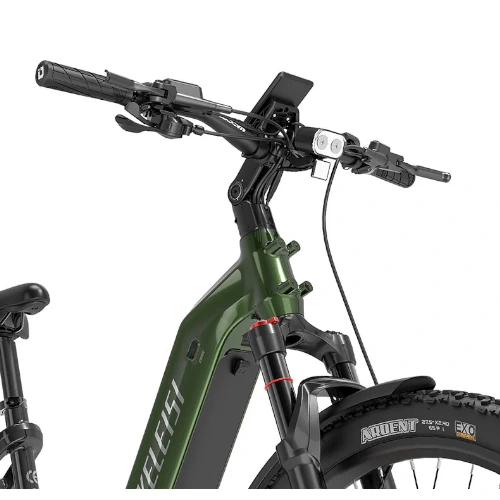Electric mountain bikes (e-MTBs) have transformed trail riding. They make climbing easier, extend your range, and let you enjoy more time outdoors. But not all e-MTBs perform the same. One key difference lies in the type of pedal-assist sensor: torque or cadence. This choice can dramatically affect how your ride feels. If you’re considering a model like the Vakole EMT29, understanding these sensors is essential.
Table of Contents
What Is a Cadence Sensor?
A cadence sensor detects if and how fast you’re pedaling. Once it senses movement, it activates the motor at a fixed level. It’s a basic on/off system—start pedaling, and the motor kicks in.
Bikes with cadence sensors are usually more affordable. They’re simple to use and great for casual riders. With fewer parts, they also require less maintenance.
However, cadence sensors have limitations. There’s often a delay before the motor engages. The motor gives the same output regardless of how hard you pedal. This can make the ride feel jerky or disconnected, especially on rough terrain. While cadence sensors work fine for flat roads or commuting, they lack the precision needed for mountain trails.
What Is a Torque Sensor?
Torque sensors offer a more advanced experience. They measure how hard you’re pedaling and adjust motor power in real time based on your effort. This creates a smoother, more responsive ride.
The motor responds immediately to your pedaling force, making it feel like riding a regular bike, with extra strength. Torque sensors are ideal for trails, where power needs to match terrain changes. They also use battery power more efficiently, allowing longer rides.
On the downside, torque sensors increase the bike’s cost and are slightly more technical to maintain. Still, for mountain biking, where control and timing matter, torque sensors are the clear winner.
Why Torque Sensors Matter for E-MTBs
Mountain biking is dynamic. You’re constantly adjusting to terrain—steep climbs, tight turns, and rocky paths. A torque sensor makes the motor feel like an extension of your body.
Climbing becomes smoother, with power that matches your effort. Cornering is more controlled, without sudden speed bursts. You stay balanced and in control, even on tricky sections. This not only boosts performance but also makes riding more fun and confidence-inspiring.
Vakole EMT29: A Smart Choice with Torque Sensing
Many entry- to mid-level e-MTBs still use cadence sensors to cut costs. The Vakole EMT29 breaks that trend. It includes a high-performance torque sensor, offering a more advanced ride without a premium price.
Power kicks in exactly when you push the pedals. It’s great for steep climbs and uneven terrain. Smarter power delivery means longer rides on a single charge. You get the flow of a traditional bike, with added muscle.
This sensor transforms the Vakole EMT29 into a responsive, capable trail machine.
Final Thoughts: Which Sensor Should You Choose?
If you ride mostly on flat roads or use your e-bike for commuting, a cadence sensor might be enough. But if you’re serious about mountain biking—especially on trails or in the backcountry—a torque sensor is the better choice.
The Vakole EMT29 offers this advanced feature in a well-rounded package, making it one of the smartest options in its class.



